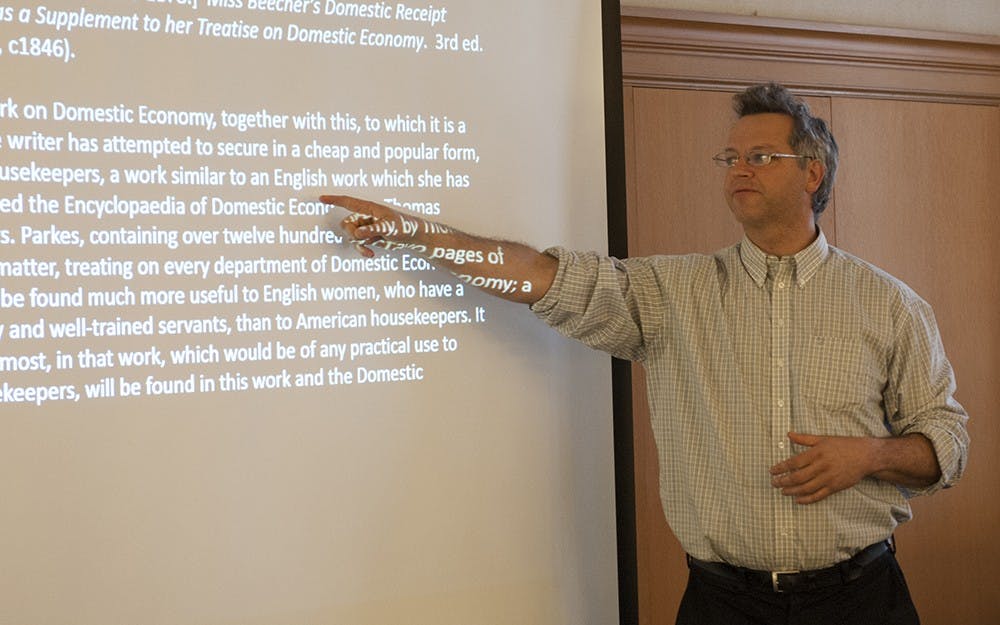The era he focused on was between the American Revolution and American Civil War. This was during a shift from British to American tradition, and that shift translated into a focus on defining the American identity in food.
“We have to make food and drink American in some way,” he said, referencing the meaning hidden in the cookbooks projected behind him.
These books focused on “stripping away any notion of ‘Britishness,’” Dierks said. Whether it was the use of only American ingredients or simplifying techniques to suit American cooks, homemakers wanted something that was more accustomed to their new lifestyle.
However, despite changes due to non-existent copyright laws, moved from writer to writer with little change made, many cookbooks featured British recipes that had been Americanized.
This showed that though American culture tried to separate from Britain, certain aspects like food remained the same. However, the fact that these cookbooks tried to focus in on purely “American” food showed the initial first sign that people were starting to pull away from their British roots.
Delving further into the content of these cookbooks, Dierks said they focused on food and household management.
“Food becomes part of the project of managing a household,” he said.
Recipes, or receipts, focused on not only the creation of food but the creation of household objects. Dierks made this comparison to simplify the idea. While typical Americans are used to cooking their own meals, the line is usually drawn at cleaning supplies.
Where the average modern American might go to the local grocery store to buy disinfectant, homemakers of the 19th century made their own disinfectant.
These cookbooks also provided those recipes. In a way, Dierks compared the cookbooks to a training manual for the household.
This was also an era where women gained a stronger role in society. Women were expected to understand more mathematics and science when they managed their home, in terms of cooking hygienically with proper recipe measurements, and they had more opportunities to publish their writing.
For example, women were able to write cookbooks.
Dierks referenced Eliza Leslie — a popular cookbook author of the time. Cookbooks enabled women to launch the “nationalization and then the globalization of American food culture,” according to the Lilly Library.
This was especially the case in the 1850s, when sampling ethnic foods became trendy. Think back to the Brazillian rice pudding recipe. These books opened the mind and appetite for readers.
“It’s about just trying it out,” he said. “This is giving women a more global role.”






